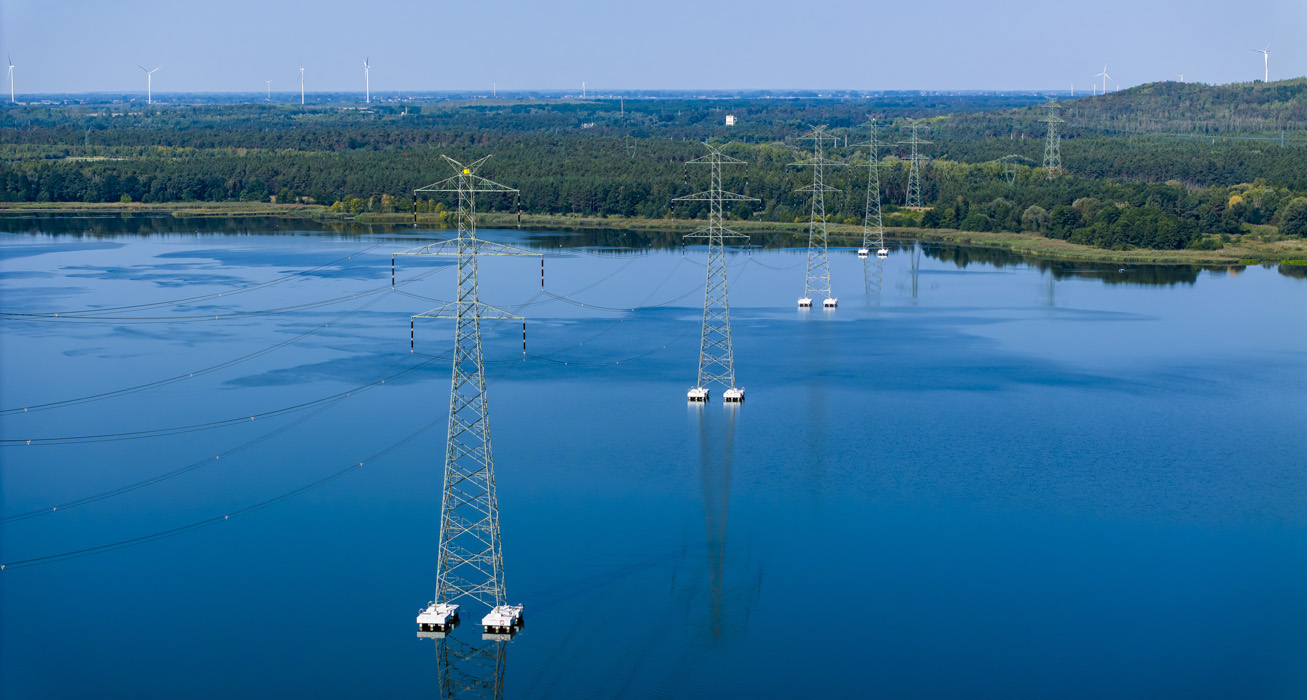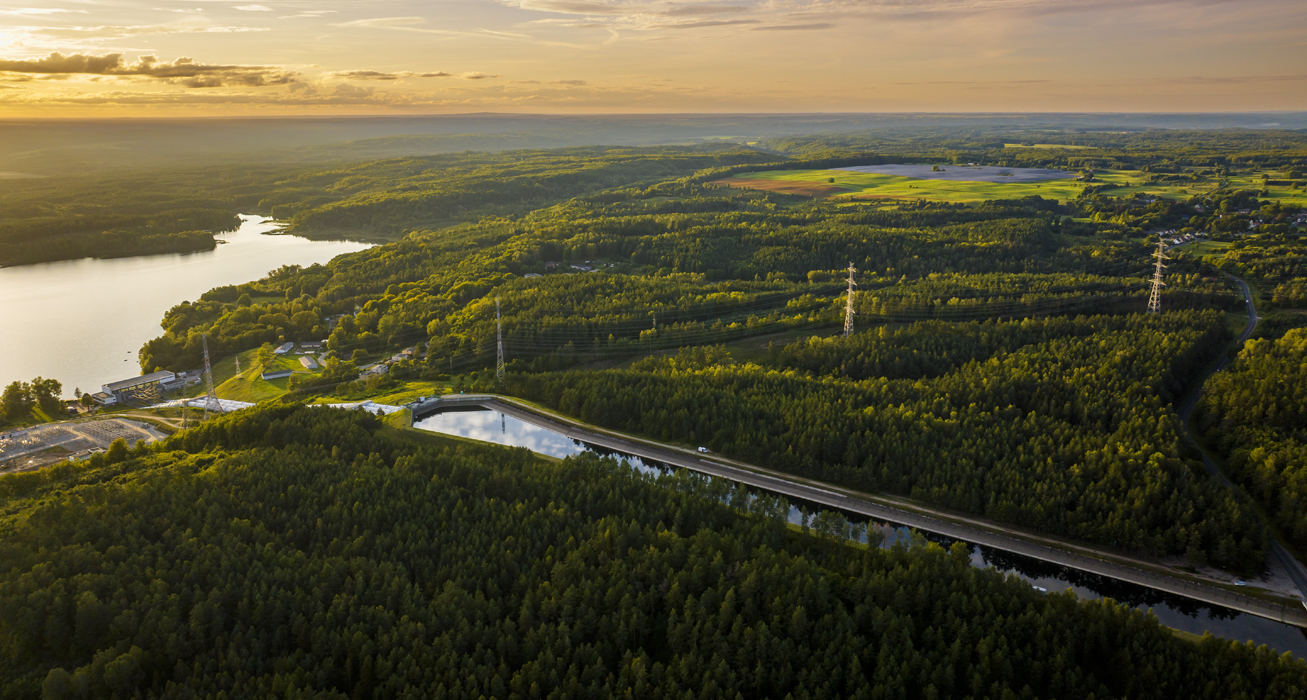- Technological advancement in the area of data collection and processing will impact the importance of TSOs as HFD (High Frequency Data) holders
In today’s economy, data acquired with high frequency, showing economic activity, plays an increasingly important role. The use of such data is becoming easier thanks to the development of data processing technologies and the use of the analytical potential of large language models (AI). PSE acts as the Energy Market Information Operator and oversees the establishment and development of the Central Energy Market Information System, which is responsible for the development of a platform for the collection, distribution and analysis of data on the electricity market in Poland. The development of CSIRE will be supportive of the prosumer sector, or electricity market participants.
- Technological advances in the area of energy storage and generation are changing the structure of generation and the nature of the transmission grid and the role of the TSO
Poland is undergoing rapid development of prosumer energy based on photovoltaics, which began to play a noticeable role in the national energy mix in 2020 and whose importance is steadily increasing. The development of the large-scale photovoltaic sector is gaining momentum. More onshore wind farms are being built. Electricity generating companies are gearing up for the implementation of offshore wind farm projects. The new generation model poses an increasingly serious challenge for grid management, especially during periods of RES generation surplus or deficit.
What poses a barrier to the development of renewable energy is the problem of energy storage in periods of its excessive generation for use in periods when RES generation is impossible (no wind, nighttime, etc.). In recent years, the commercial use of energy storage (chemical, mechanical, pumped storage facilities) has become increasingly common. The development of the technology is supported by falling component costs and the growth of commercial energy storage facilities for power systems.
However, regulatory support for the development of storage technologies is much smaller in scope than support for generation technologies, and the rate of investment in new storage facilities is lower than for generation technologies, which significantly limits further integration of RES technologies into power systems.
Poland has its first commercial-scale energy storage facilities, such as the BESS facility in Pomerania.
- Development of e-mobility
The year 2023 was another period of electromobility development. In many European countries, this development was supported by subsidies for BEV buyers. However, the withdrawal of some of the subsidies resulted in a significant weakening of demand in late 2023 and early 2024. The discussion on the development directions of the automotive industry is still ongoing. At the same time, the development of infrastructure to ensure the effective use of BEVs has been relatively slow and in any case has diverged significantly from plans to electrify road transport.
- Price war in the electricity technology market (RES and storage)
Competition from Chinese companies, increasingly dominant in the RES sector, has taken on the character of a price war. The production of sector manufacturing components and end solutions (PV panels, batteries/energy storage units, wind turbines, EVs) is often scaled in the Chinese economy to match or exceed global demand, in combination with a low-price policy. This makes it difficult or impossible to build these sectors outside of China (as evidenced, among other things, by recent decisions by European manufacturers to reduce investments related to battery/energy storage production). The result is an increasing monopolisation of many sectors (with shares of Chinese manufacturers between 60 and more than 90 percent of global supplies) and a growing dependence of the EU on Chinese supply chains. This can make one of the main goals of the green transition, i.e. energy autonomy, difficult to achieve – not because of dependence on imported energy resources but because of dependence on technology.
At the same time, China’s industrial policy in this area has led to long-term price declines for many RES technologies, in particular lowering the cost of investment in PV and energy storage facilities. In the longer term, however, significant price fluctuations are possible due to periodic constraints on production or supply from China.
- Problems of European RES companies
By 2023, many European companies in the RES sector, especially wind power, were in deep financial trouble. The problems affected, among others, companies involved in wind power development in Poland, including Orsted A/S and Siemens Energy. In Q1 2024, the situation of these companies stabilised periodically (in the case of Siemens Energy backed by state aid), but the sources of risks, including growing competition from China and investment uncertainty in the US and other regions of the world, have not been removed.
- Government policy to build nuclear power in Poland
A programme to build nuclear power plants is underway in Poland. The project site is being prepared, and regulatory work is in progress. The planned commissioning dates for Poland’s first nuclear power units (the first half of the next decade) are also key to the process of decarbonising the power industry and to the challenge posed by ageing coal-fired units, still the core of the NPS. With reported delays to the original investment plans, the risks associated with maintaining security of supply during the transition period are increasing.
- The development of the European market and increase in cross-border exchange contribute to a long-term price convergence process in Europe
The development of the European market, supported by successive regulations, results in an increase in the scale of cross-border exchange. The development of a common market based on bidding zones affects the development of the national transmission grid and necessitates its adaptation to the new scale and directions of cross-border flows. In the medium-term, it can also be a source of additional costs for transmission system operators owing to the need for a more frequent use of remedial actions outside the market.
- Change in Germany’s commercial exchange balance
As a result of the shutdown of nuclear power plants in 2023 and the implementation of the Energiewende policy, Germany has become a net energy importer for the first time in at least 20 years. This is a result of both the collapse of exports after 2022 and the longer trend of import growth, which has continued since 2019. Data from the first half of 2024 indicates a continuation of both developments, especially an acceleration in the growth rate of imports.
- Discussion on the reform of the electricity market design
In 2023, the EC submitted for discussion draft amendments aimed at facilitating market penetration of RES and at the same time accelerating the phase-out of natural gas as a transition fuel as well as reducing the sensitivity of energy prices for end users, especially residential consumers, to fossil fuel price volatility. The changes are intended to complement the European Green Deal and the REPowerEU programme.
- ETS and the cost of generation from emission sources
The situation of the national power system, and especially the condition of generators using conventional generation sources, is also increasingly affected by EU climate policy and the growing pressure ─ both regulatory and from ETS pricing ─ for accelerated decarbonisation of the power industry. The primary tool of this policy emission allowance trading (ETS), a mechanism where the price of allowance is determined by the market. ETS price increase has been witnessed for several years. In 2023, the price of the unit, after rising to a record high of more than EUR 100, fell to around EUR 70 by the end of the year and stabilised at that level in the first half of 2024. The ETS covers more and more sectors of the economy, which is expected to accelerate the decarbonisation process.
For some European countries, including Poland in particular, coal-exit will be a major technological challenge due to the share of coal technologies in domestic generation and the time needed to phase in other technologies that could replace those used today.
- European climate policy will drive rapid adaptation of the grid to the new generation structure
As a result of the spread of new distributed RES generation and storage technologies, it will become necessary to adapt both the distribution networks managed by distribution companies and the transmission grids managed by PSE to the new model and spatial allocation of generation.
This will necessitate in-depth redevelopment of transmission and distribution networks. In many European countries where investments in the redevelopment of the network structure have been made for a longer period of time, they are found to pose serious challenges in terms of cost and organisational and engineering issues. Costs are often significantly higher than planned, and implementation delays are significant.
- Restoring the balance of energy resources markets
Market prices for coal, oil and natural gas remained stable. The first quarter of 2023 saw price declines followed by long-term stabilisation until the end of the year.

